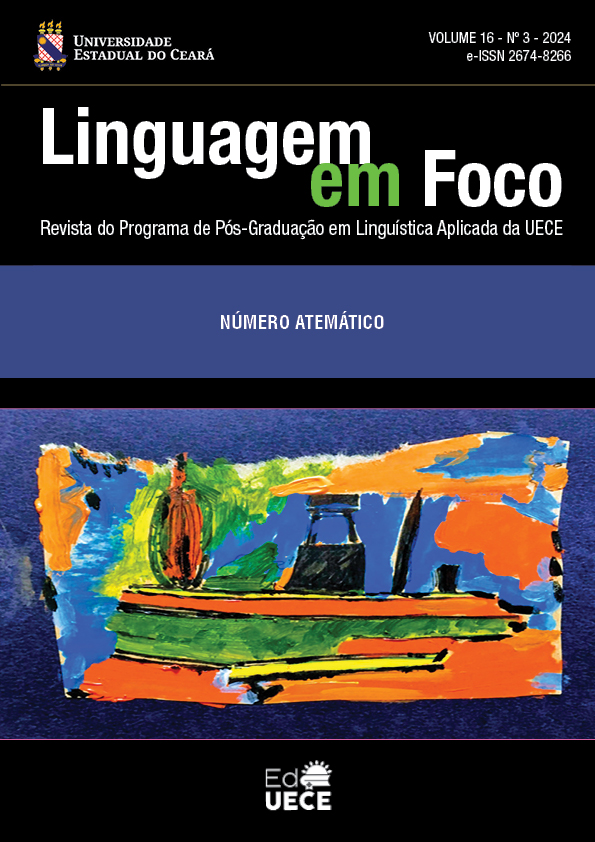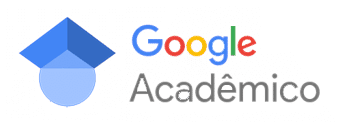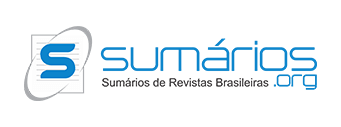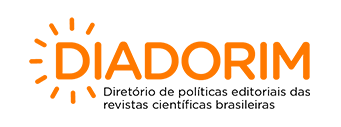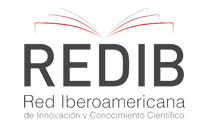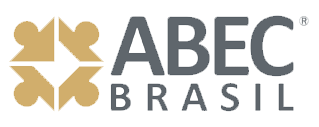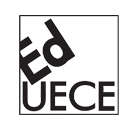ChatGPT and the death of creative honesty in textual production in the Basic Education classroom
a case study with first-year HS students
DOI:
https://doi.org/10.46230/lef.v16i3.13561Keywords:
artificial intelligence, text production , linguistic educationAbstract
This paper emerged from a case study (Yin, 2010) of an experience experienced in a public school in the state of Mato Grosso do Sul, with a class of first-year high school students, during Portuguese language classes, in March 2024. The activity proposed to the students involved the production of poems focused on the theme of women. In the 32 texts submitted by the students, the class teacher detected the use of Artificial Intelligence (AI) tools, specifically ChatGPT, in 13 of them. With this in mind, this work aims to analyze some of the poems produced by the AI, in order to point out certain regularities and occurrences in the texts, in addition to drawing a comparison with the productions actually carried out by the students. To this end, we used as a theoretical framework research on AI concepts (Santaella, 2023), the use of technologies in language teaching (Martins; Moreira, 2012), as well as studies on textual genres and textual production in schools (Schneuwly; Dolz, 2004). As a result, we point out that AI in text production, especially in the literary canon, has limitations in some aspects, such as the subjectivity of the content produced and the perpetuation of the form based only on rhymes - which excludes other possibilities of constructing the poem. We emphasize the need for teachers to be trained for these new technologies, and not just about them, aiming at a critical and reflective look at the possibilities and limitations of AI in schools and in contemporary language education. Finally, we recognize that many teachers are already working, therefore, continuing education is also a viable alternative, considering this exposed reality.
Downloads
References
ASSOCIAÇÃO AMIGOS DO CINEMA E DA CULTURA (AACIC). Festival da Juventude – Literatura, Livro e Leitura. 2024. Disponível em: https://aacic.com.br/festivaldajuventude/2024/. Acesso em: 22 abr. 2024.
BENZON, W. GPT-3: Waterloo or rubicon? Here be Dragons. Cognitive and Neuroscience, v. 4, n. 1, p. 1-39, ago. 2022. Disponível em: https://www.researchgate.net/publication/343444766_GPT3_Waterloo_or_Rubicon_Here_be_Dragons. Acesso em: 01 mai. 2024.
BODEN, M. Inteligência artificial: uma brevíssima introdução. São Paulo: Editora Unesp, 2020.
BOA SORTE, P.; FARIAS, M. A. de F.; SANTOS, A. E. dos; SANTOS, J. do C. A.; DIAS, J. S. dos S. R. Inteligência artificial e escrita acadêmica: o que nos reserva o algoritmo GPT-3?. Revista EntreLinguas, Araraquara, v. 7, n. 00, p. e021035, 2021. DOI: 10.29051/el.v7i00.15352. Disponível em: https://periodicos.fclar.unesp.br/entrelinguas/article/view/15352. Acesso em: 22 abr. 2024.
BRASIL. Lei nº 15.100, de 13 de janeiro de 2025. Dispõe sobre a utilização, por estudantes, de aparelhos eletrônicos portáteis pessoais nos estabelecimentos públicos e privados de ensino da educação básica. Diário Oficial da União: seção 1, Brasília, DF, 14 jan. 2025. Disponível em: https://www2.camara.leg.br/legin/fed/lei/2025/lei-15100-13-janeiro-2025-796892-norma-pl.html. Acesso em: 26 jan. 2025.
BUCKINGHAM, D. Media education: literacy, learning and contemporary culture. Cambridge Press, 2003.
BUCKINGHAM, D. The media education manifesto. Cambridge, Londres: Polity Press: 2019.
CHAPELLE, C. A. Computer assisted language learning. In: HINKEL, E. (ed.), Handbook of research in second language teaching and learning. Mahwah, Lawrence Erlbaum Associates, 2005, p. 743-755.
DUDENEY, G.; HOCKLY, N. How to: teach English with technology. Essex, Pearson Education Limited, 2007.
DUQUE-PEREIRA, I. da S.; MOURA, S. A. de. Compreendendo a inteligência artificial generativa na perspectiva da língua. In: SciELO Preprints, 2023. Disponível em: https://doi.org/10.1590/SciELOPreprints.7077. Acesso em: 02 mai. 2024.
EGBERT, J. CALL Essentials: principles and practice in CALL classrooms. Alexandria, Teachers of English to Speakers of Other Languages, 2005.
GERHARDT, T. E.; SILVEIRA, D. T. Métodos de pesquisa. Porto Alegre: Editora da UFRGS, 2009.
HUBBARD, P. General introduction. In: HUBBARD, P. Computer Assisted Language Learning: Critical Concepts in Linguistics. London, Routledge, 2009. p.1-20. Disponível em: http://www.stanford.edu/~efs/callcc/callcc-intro.pdf. Acesso em: 29. abr. 2024.
JÚNIOR, C. F. de C.; CARVALHO, K. R. S, dos A. de. Chatbot: uma visão geral sobre aplicações inteligentes. Revista Sítio Novo, v. 2, n. 2, p. 68-84, 2018. DOI: http://dx.doi.org/10.47236/2594-7036.2018.v2.i2.68-84p. Acesso em: 23 abr. 2024.
LEVY, M.; HUBBARD, P. Why call CALL “CALL”? Computer Assisted Language Learning, v. 18, n. 3, p. 143-149, 2005.
MARTINS, C. B. M. J.; MOREIRA, H. O campo CALL (Computer Assisted Language Learning): definições, escopo e abrangência. Calidoscópio, v. 10, n. 3, p. 247-255, set/dez 2012. DOI: 10.4013/cld.2012.103.01. Disponível em: https://revistas.unisinos.br/index.php/calidoscopio/article/view/3254. Acesso em: 28 abr. 2024.
McCARTHY, J. What is Artificial Intelligence? In: Stanford Computer Science, 2007. Disponível em: http://www-formal.stanford.edu/jmc/whatisai.pdf. Acesso em: 22 abr. 2024.
NILSSON, N. The quest for artificial intelligence: a history of ideas and achievements. Cambridge: Cambridge University Press, 2009.
REIS, S. C. dos. As tendências teóricas em estudos de CALL no Brasil: identificando o estado da arte. In: Encontro do cel-sul, 8, Porto Alegre, 2008. Porto Alegre, 2008, p. 1-21. Disponível em: www.celsul.org.br/Encontros/08/estudos_de_call. pdf. Acesso em: 29 abr. 2024.
RUSSEL, S. J.; NORVIG, P. Artificial Intelligence: a modern approach. New Jersey. Prentice Hall, 2021.
SANTAELLA, L. Balanço Crítico Preliminar Do Chatgpt. Revista FAMECOS, v.30, n.1, e44380. 2023. DOI: https://doi.org/10.15448/1980-3729.2023.1.44380. Acesso em: 28 abr. 2024.
SCHNEUWLY, B.; DOLZ, J. Gêneros orais e escritos na escola. ROJO, R.; CORDEIRO, G. S. (Orgs.). Campinas: Mercado de Letras, 2004.
TAULLI, T. Introdução à inteligência artificial: uma abordagem não técnica. 1. ed. São Paulo: Novatec, 2020.
YIN, R. K.Estudo de Caso: Planejamento e Métodos. 4ª Edição. Porto Alegre: Bookman, 2010.
Downloads
Published
How to Cite
Issue
Section
License
Copyright (c) 2025 Fernanda Victória Cruz Adegas, Luclecia Silva de Almeida Matias, Patrícia Graciela da Rocha

This work is licensed under a Creative Commons Attribution 4.0 International License.
Authors who publish in Linguagem em Foco Scientific Journal agree to the following terms:
- Authors retain the copyright and grant the journal the right of first publication. The articles are simultaneously licensed under the Creative Commons Attribution License which allows sharing the work with an acknowledgement of its authorship and initial publication in this journal.
- The concepts issued in signed articles are the absolute and exclusive responsibility of their authors. Therefore, we request a Statement of Copyright, which must be submitted with the manuscript as a Supplementary Document.
- Authors are authorized to make the version of the text published in Linguagem em Foco Scientific Journal available in institutional repositories or other academic work distribution platforms (ex. ResearchGate, Academia.edu).

